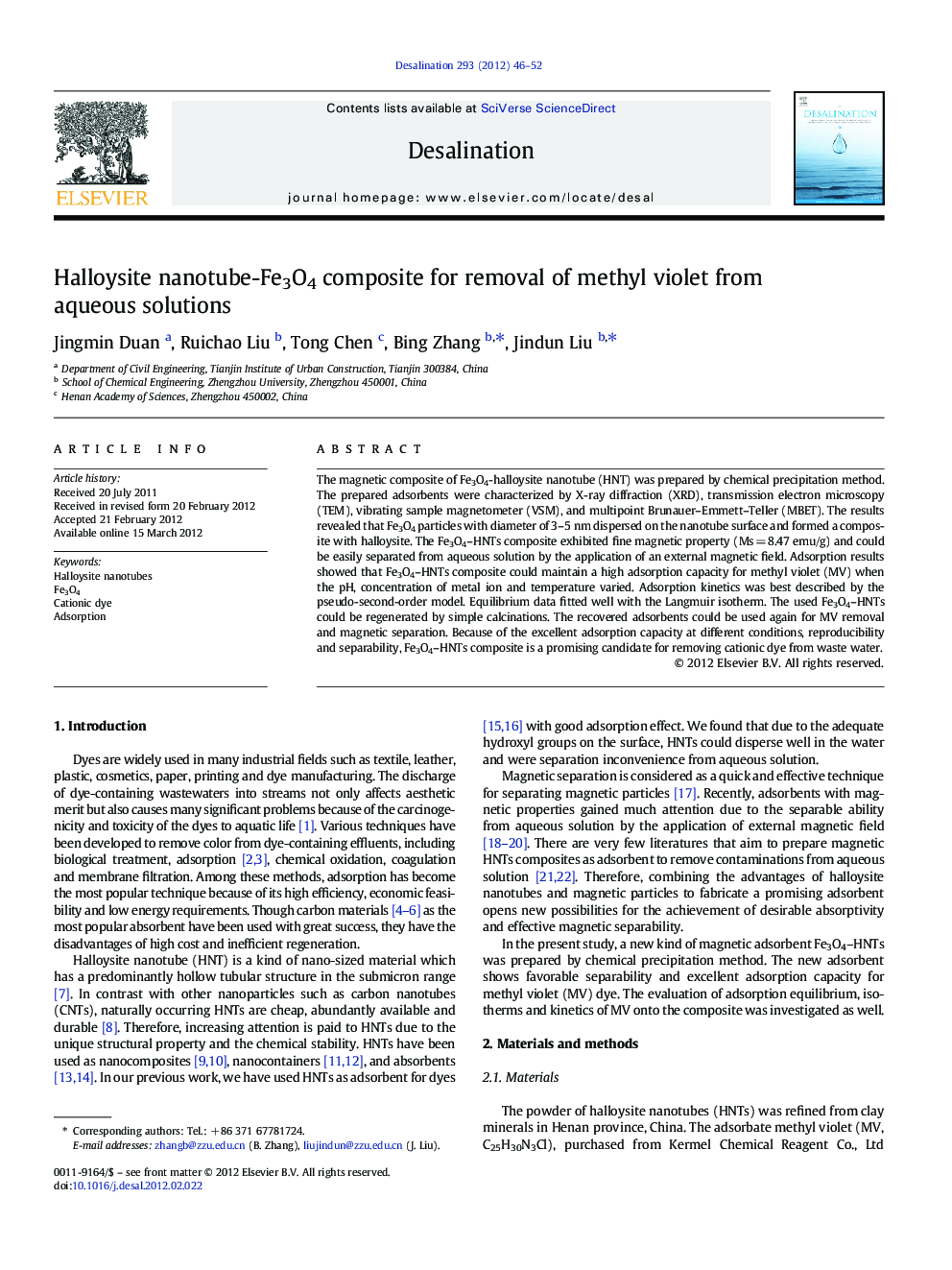| کد مقاله | کد نشریه | سال انتشار | مقاله انگلیسی | نسخه تمام متن |
|---|---|---|---|---|
| 624393 | 1455398 | 2012 | 7 صفحه PDF | دانلود رایگان |

The magnetic composite of Fe3O4-halloysite nanotube (HNT) was prepared by chemical precipitation method. The prepared adsorbents were characterized by X-ray diffraction (XRD), transmission electron microscopy (TEM), vibrating sample magnetometer (VSM), and multipoint Brunauer–Emmett–Teller (MBET). The results revealed that Fe3O4 particles with diameter of 3–5 nm dispersed on the nanotube surface and formed a composite with halloysite. The Fe3O4–HNTs composite exhibited fine magnetic property (Ms = 8.47 emu/g) and could be easily separated from aqueous solution by the application of an external magnetic field. Adsorption results showed that Fe3O4–HNTs composite could maintain a high adsorption capacity for methyl violet (MV) when the pH, concentration of metal ion and temperature varied. Adsorption kinetics was best described by the pseudo-second-order model. Equilibrium data fitted well with the Langmuir isotherm. The used Fe3O4–HNTs could be regenerated by simple calcinations. The recovered adsorbents could be used again for MV removal and magnetic separation. Because of the excellent adsorption capacity at different conditions, reproducibility and separability, Fe3O4–HNTs composite is a promising candidate for removing cationic dye from waste water.
Figure optionsDownload as PowerPoint slideHighlights
► The magnetic composite of Fe3O4-halloysite was prepared by chemical precipitation method.
► The composite can be separated rapidly from solution by the application of external magnetic field.
► The composite shows excellent adsorption capacity and reproducibility for methyl violet dye.
Journal: Desalination - Volume 293, 1 May 2012, Pages 46–52